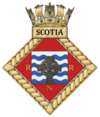
The Royal Naval Reserve (RNR) is one of the two volunteer reserve forces of the Royal Navy in the United Kingdom. Together with the Royal Marines Reserve, they form the Maritime Reserve. The present RNR was formed by merging the original Royal Naval Reserve, created in 1859, and the Royal Naval Volunteer Reserve (RNVR), created in 1903. The Royal Naval Reserve has seen action in World War I, World War II, the Iraq War, and War in Afghanistan.

The Commander-in-Chief Fleet (CINCFLEET) was the admiral responsible for the operations of the ships, submarines and aircraft of the British Royal Navy from 1971 until April 2012. The post was subordinate to the First Sea Lord, the professional head of the Naval Service. In its last years, as the Navy shrank, more administrative responsibilities were added.

The University Royal Naval Units (URNU) are Royal Navy training establishments who recruit Officer Cadets from a university or a number of universities, usually concentrated in one geographical area. There are 17 URNUs in the UK, with each URNU having land-based facilities near the universities they recruit from, with the exception of URNU Virtual, whose drill nights are conducted virtually.

The Royal Naval Auxiliary Service (RNXS) was a uniformed, unarmed, civilian volunteer service, administered and trained by the Royal Navy to operate in the ports and anchorages of the United Kingdom in an emergency. Although the abbreviated title would logically have been RNAS this abbreviation had long been taken by the various Royal Naval Air Stations, so RNXS it was. It maintained training units, and vessels at most major ports in the UK. and was formed in 1963 from the amalgamation of the Royal Naval Mine-watching Service (RNMWS) and Admiralty Ferry Crew Association in response to the perceived nuclear threat to British ports. The service was disbanded on 31 March 1994 due to Ministry of Defence (MOD) cuts. Most vessels from its fleet were transferred to the Royal Navy or sold, with the exception of XSV Loyal Volunteer, which was struck by a ro-ro ferry while berthed in Ipswich Harbour and was later scrapped.
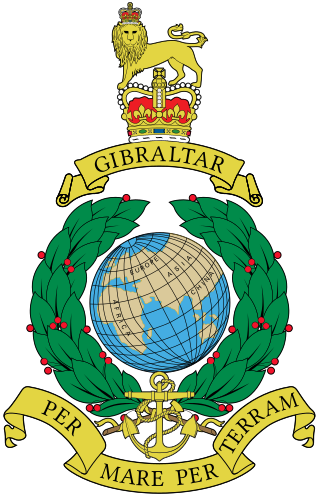
The Royal Marines Reserve (RMR) is the volunteer reserve force used to augment the regular Royal Marines. The RMR consists of some 750 trained ranks distributed among the four units within the UK. About 10 percent of the force are working with the Regular Corps on long-term attachments in all of the Royal Marines regular units. All the volunteers within the RMR must pass through the same rigorous commando course as the regulars. The former may be civilians with no previous military experience or may be former regular Royal Marines.

HMS Ceres is a Royal Naval Reserve unit located in Leeds, West Yorkshire.

Port Edgar is a marina on the southern shore of the Firth of Forth, immediately west of the Forth Road Bridge and the town of South Queensferry, in Edinburgh, Scotland. Originally a naval base, HMS Lochinvar, Port Edgar is now a busy marina with a sailing school and 300 berths. The Edgar commemorated in the name is Edgar Aetheling, the brother of Queen Margaret.
HMS Lochinvar was a minesweeping training "stone frigate" of the Royal Navy, sited at Port Edgar on the Firth of Forth. It was established in 1939. From 1943 to 1946 it was temporarily transferred to nearby Granton Harbour while Port Edgar became a training centre for the 1944 Normandy Landings. HMS Lochinvar closed in 1975 when its operations moved across the Forth to HMS Caledonia in the rebuilt naval base at Rosyth.

HMS Eaglet is a Royal Navy Reserve unit based in Liverpool. She is the main occupant of the Royal Navy Regional Headquarters in Liverpool, Merseyside. The base is also the home to a number of units, including:Royal Marines Reserve Merseyside, Naval Regional Command Northern England, Liverpool URNU, HMS Biter, HMS Charger, Sea Cadet Corps, and the Liverpool Royal Navy and Royal Marines Careers Office.
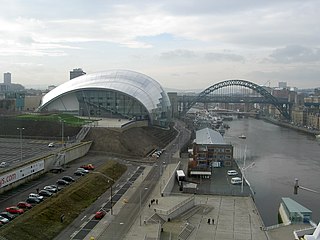
HMS Calliope is a training centre and 'stone frigate' of the Royal Naval Reserve, located in Gateshead, Tyne and Wear.

Royal Air Force Pitreavie Castle or RAF Pitreavie Castle was a station of the Royal Air Force located at Pitreavie Castle in Dunfermline and near Rosyth, Fife, Scotland.

The Flag Officer Scotland and Northern Ireland (FOSNI) was a senior post in the Royal Navy of the United Kingdom. It was based at HM Naval Base Clyde, and the holder of the post was the Royal Navy’s senior officer in Scotland. The post of FOSNI, dating from 1946, was re-scoped and re-named in 1994 to Flag Officer Scotland, Northern England & Northern Ireland (FOSNNI), then named back in 2015, before being dis-established in 2020.
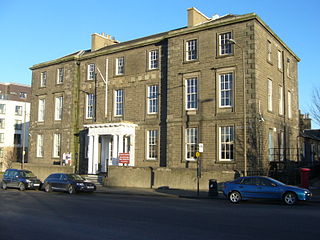
HMS Claverhouse was a shore establishment of the British Royal Navy, based at Granton, Edinburgh. It is a listed building, used as a training centre for E Squadron, 205 (Scottish) Field Hospital (Volunteers).
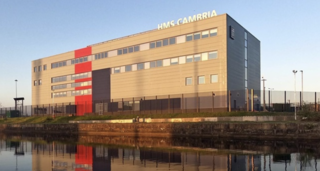
HMS Cambria is the lead Royal Naval Reserve unit in Wales. It is based at Sully near the Welsh capital, Cardiff.
HMS Dalriada is Glasgow's Royal Naval Reserve unit. It is based in Govan, one of the city's south-western suburbs.
In 1989 the Royal Navy was under the direction of the Navy Department in the UK Ministry of Defence. It had two main commands, CINCFLEET and Naval Home Command.
His Majesty’s Ship Caledonia is a military establishment of the Royal Navy based next to the former Royal Naval Dockyard, Rosyth in Scotland.

The University Royal Naval Unit East Scotland is one of 17 University Royal Naval Units and a Royal Navy training establishment based in Scotland, accepting roughly 65 Officer Cadets from universities in Edinburgh, Fife and the Tayside region. It is one of the University Service Units and is under the command of Britannia Royal Naval College, Dartmouth. The unit's affiliated P2000 ship is HMS Archer, which is predominantly used for training Officer Cadets.

